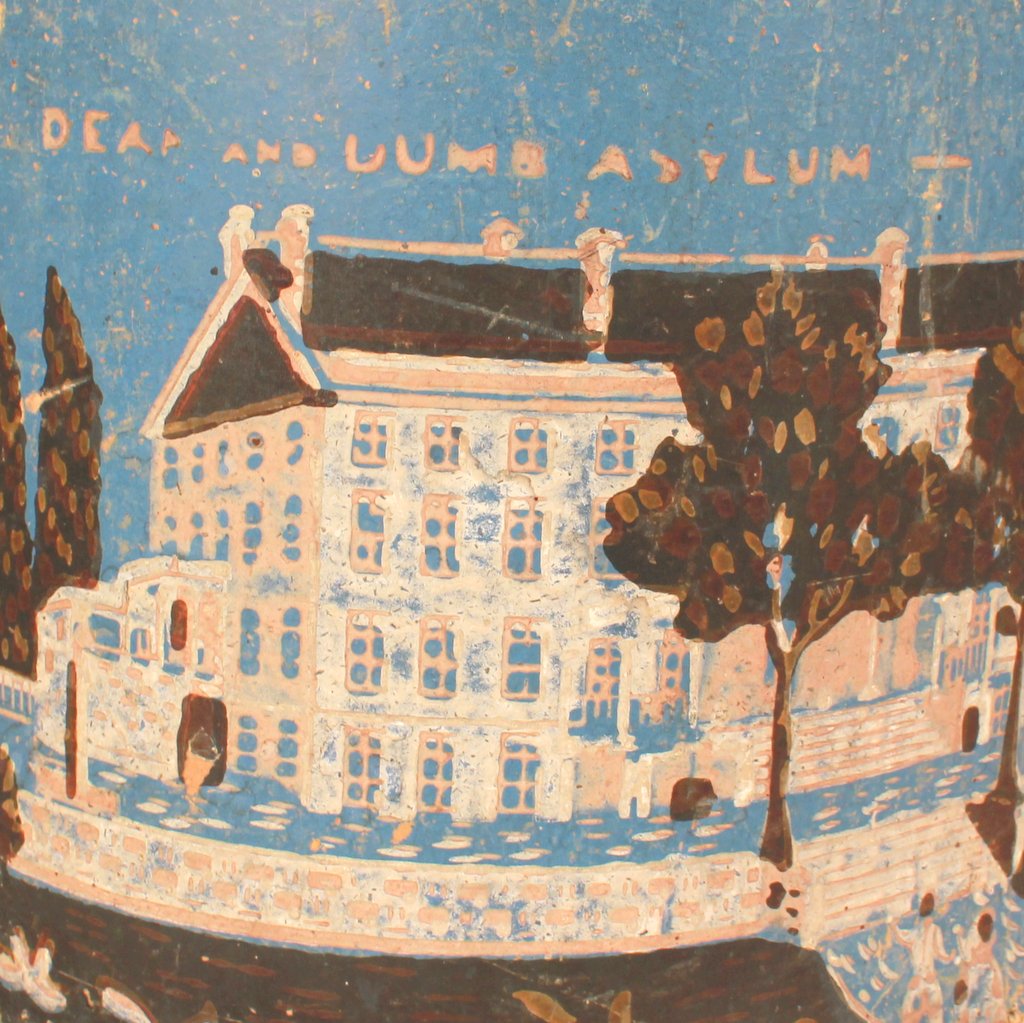Sold: Deaf & Dumb Asylum Bandbox
“Deaf and Dumb Asylum” bandbox / wallpaper, paperboard / New York City / c. 1830s
Rare and important woodblock-printed “wallpaper” hat box depicting the first New York City Deaf and Dumb Asylum, c. early 1830s. This bandbox design was inspired by the illustration of the Deaf and Dumb Asylum in Theodore S. Day’s “Views of New York and its Environs,” published in 1831. The building was originally located at East 49th Street between 5th Avenue and 4th Avenue (now Park Avenue), only a few blocks from present-day Rockefeller Center. The purpose was to educate “deaf mutes” and teach sign language, a movement famously spearheaded by the Reverend Thomas Hopkins Gallaudet, well known educator of the deaf who studied European teaching methods and founded the first free school for the deaf in America.
Although it may come as a surprise that a Deaf and Dumb Asylum should decorate a hat box, to contemporary Americans in the nineteenth century the erection of such an edifice was a great, noble, and apparently picturesque endeavor. In his “Views of New York and its Environs,” Day writes:
“Among the benevolent institutions springing from a civilized state of society, few so directly appeal to the best sympathies of our nature … How different is it with those unfortunates to whom the blessings of speech and hearing are denied? … The soul, shut up in a prison, languishes, bereft of half its strength and beauty. Surely these innocent victims of so awful a calamity are objects of compassion. And surely those … to whose noble exertions we owe the Institution for the Deaf and Dumb, merit the respectful gratitude of them, and of all the world, for adding so greatly to the sum of human happiness.”
Read more of his description of the asylum here.
This rare hat box is not only an important historical document capturing the institutional idealism of nineteenth century America, but also a scarce surviving example of woodblock-printed paper bandboxes, an American vernacular art form which due to its commercial and ephemeral nature seldom survives. Hat Boxes and Bandboxes at Shelburne Museum by Lillian Baker Carlisle (published 1960) documents the most extensive collection of American bandboxes and describes the Deaf and Dumb Asylum pattern, but the example included is only a panel fragment and in a different color scheme. The hat box here is one of a handful extant examples of the pattern, and perhaps the only fully-intact bandbox featuring the iconic scene.
Condition
Good antique condition for such an ephemeral and fragile object, with discoloration to the top of lid, marks on paper, minor peeling at edges, and other signs of age. Structurally sound with minor repairs evident on the interior. Please see photos. Displays well with colors remaining vibrant and bold.
Measurements
17.5 inches long
14 inches wide
12.75 inches high
Shipping
Free in the continental United States. If an international buyer, please contact me for a shipping estimate by clicking here.






































